Some of the most famous marsupials include kangaroos, wallabies, koalas, and even opossums. But what about all the extinct marsupials? Australia, and to a greater extent all of Australasia, parts of Indonesia, and even the America’s are all home to marsupials. All marsupial babies are born after short pregnancies and spend the first few weeks to months of their life safely in their mothers’ pouches.
Here, we’ll learn more about six types of extinct marsupials, all of which originally lived in Australia. We’ll discover what they looked like, what they ate, and when they went extinct.
Read on to learn more about extinct marsupials!
6. Crescent Nail-tail Wallaby
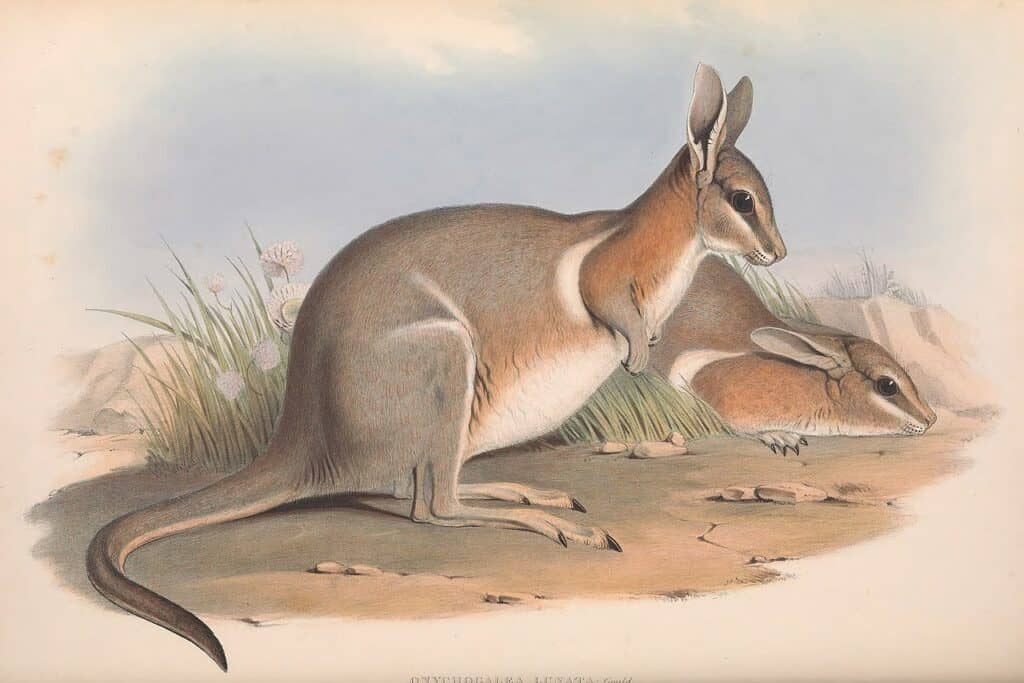
Worongs are extinct marsupials that once roamed the scrublands of western and central Australia. They resembled rabbit-sized kangaroos, with short forelegs and hare-like ears. Unlike kangaroos, worongs had ‘claws’ on the tips of their tails. They grew up to 15 inches long, with tails up to half the length of the body. These small marsupials had pale brown to gray bodies with lighter undersides and a single pale band behind the foreleg.
Worongs went extinct in many areas around the turn of the twentieth century, surviving in remote areas until around the 1950s. These creatures are described as very shy and fearful of humans. Unfortunately, this made them easy prey, particularly for European newcomers to the continent. No one knows for sure what led to the eventual extinction of the worong, but it’s possible human hunting, disease, and invasive species (like cats and foxes) all played their part.
5. Desert Rat-kangaroo
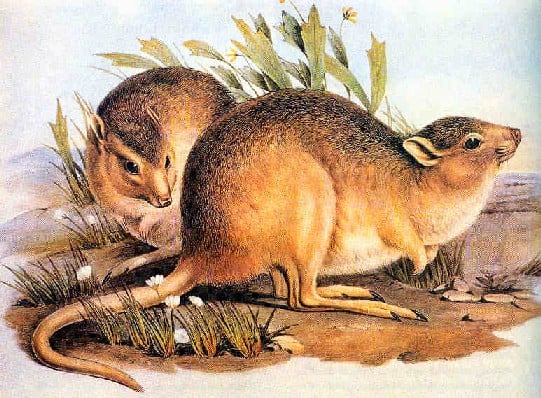
Oolacuntas are a small, kangaroo rat-like extinct marsupial. They grew up to 10 inches long and had tails up to 14 inches long. Similar to hares, at least in their fur coloration and texture, these tiny marsupials got around by hopping like kangaroos. They had short forelegs and squirrel-like heads with sturdy bodies.
Oolacuntas lived only in South Australia, where they made deserts and some shrublands home. They’re thought to have gone extinct around the 1930s. These small marsupials ate mainly insects, like weevils and beetles. They likely went extinct due to predation by invasive red foxes, as well as overhunting by humans. However, a few scientists believe there’s a chance a small population of oolacuntas still exists.
4. Desert Bandicoot
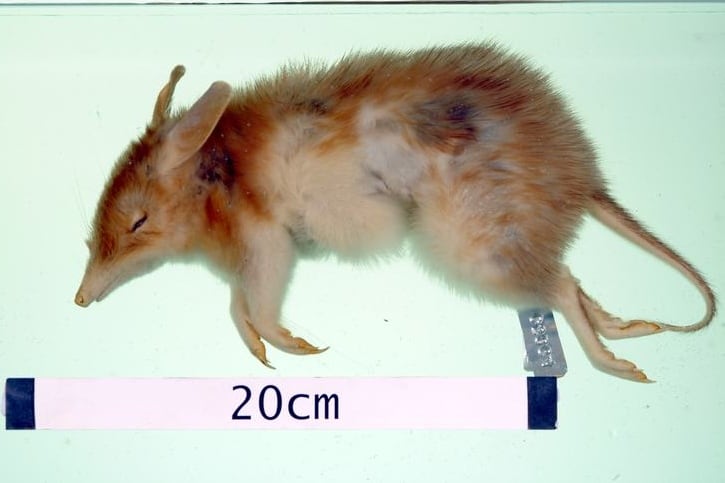
Desert bandicoots are one of the smallest extinct marsupials. They had tawny golden fur and large, rabbit-like ears, with shrew-like faces. Their tails were long, thin, and covered in the same tawny fur as the body. Like most Australian marsupials, their back legs were longer than their front legs; both sported long claws meant for digging and providing traction while running.
Desert bandicoots ran about the size of a rat, and almost certainly foraged on insects, including termites, ants, weevils, and beetles. They lived in desert regions of Australia until around the 1950s, when they were last seen. Although the exact cause of extinction is unknown, it’s likely that habitat disturbance and overhunting played a part.
3. Lesser Bilby
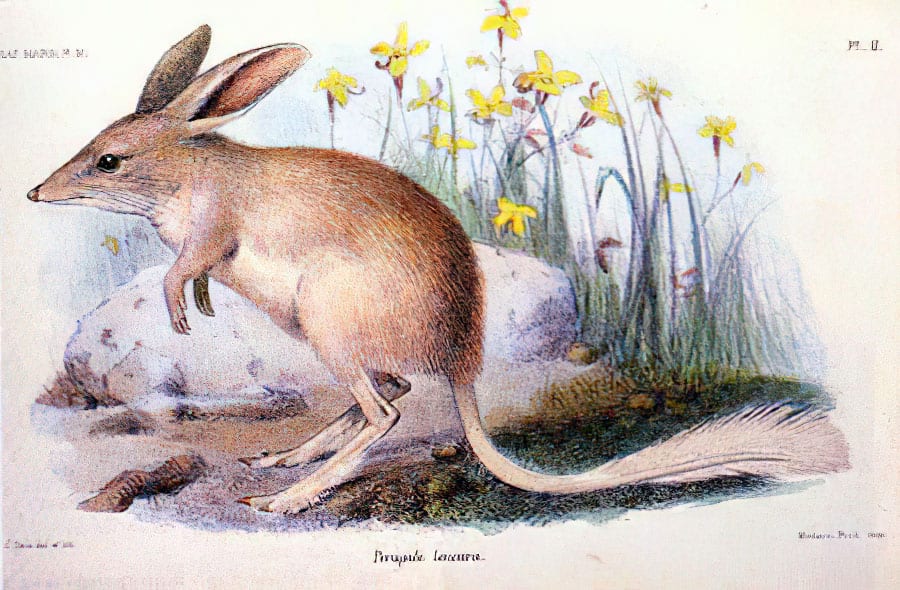
Of all the extinct marsupials in Australia, yallaras probably had the largest ears. These creatures stood on long hind legs, with long, fur-covered tails and shorter forelegs. They looked very similar to desert bandicoots, albeit with larger bodies and bigger ears. These marsupials grew to the size of rabbits and had sand-colored fur with long, questing noses.
Yallaras are believed to have gone extinct in the 1950s, along with many of Australia’s small marsupials. Their extinction is believed to have been caused by invasive species and by the presence of invasive rabbits, which they would have had to compete with for food.
2. Pig-footed Bandicoot
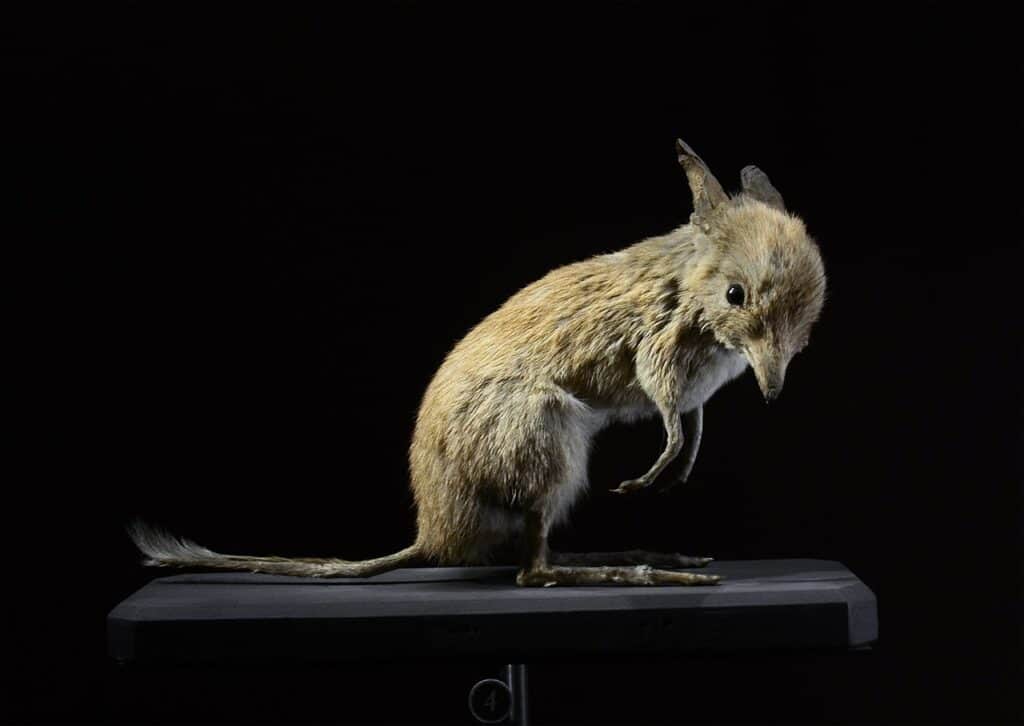
The pig-footed bandicoot is one of the most unique extinct mammals in Australia. These bandicoots, which went extinct around the 1950s, were unlike any other small marsupial. Instead of toes that terminated in claws, these bandicoots actually have hooves—two on each back foot and a single hoof on each front foot. With that in mind, it’s no surprise where they got their name.
Pig-footed bandicoots resembled other bandicoots and bilbies in that they have small, rabbit-like bodies and long tails, with large ears and narrow noses. But, instead of eating insects, these tiny creatures were actually herbivores. That’s right, like sheep, cows, and other grazers, these hoof-footed marsupials survived on grass and forbs.
1. Tasmanian Tiger

Baker; E.J. Keller. / public domain – License
The Tasmanian tiger, or, thylacine, is perhaps the most famous of all Australia’s extinct marsupials. These predators creatures were the size of dogs, with long bodies that tapered to lion-like tails. Like other marsupials, they had hind legs longer than their forelegs and raised their young in pouches. Their heads and faces looked a little bit like a cross between a kangaroo and a dog. But, perhaps their most distinctive feature was a set of tiger-like stripes that started at the shoulder, covered the hips, and ended at the tip of the tail.
Tasmanian tigers are said to have gone extinct by the 1930s. However, holdouts may have survived for years, or even decades, after that in Tasmania. Tasmanian tigers have so held the public’s interest that, even today, reports of sightings continue year after year. Unfortunately, these incredible extinct marsupials went extinct due to overhunting by humans, as well as habitat disruption and competition with introduced invasive species. Dingoes may have even played a role in the disappearance of these extraordinary marsupials.
Up Next
The post 6 Extinct Marsupials appeared first on AZ Animals.
from Animal News, Facts, Rankings, and More! - AZ Animals https://ift.tt/CLlgOs0